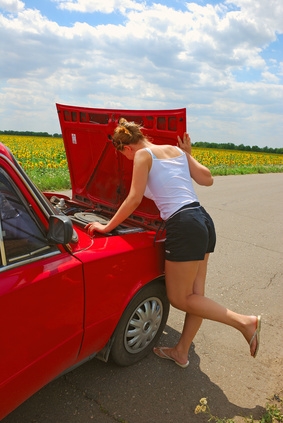
If the radiator hose in your vehicle is leaking, it can cause serious damage. With a simple repair kit you can fix the hose with ease. Regardless of where you are located, you can have the knowledge and tools to get back on the road within an hour. Make sure to include the required tools and parts in your emergency car repair kit. If a damaged hose causes your engine to overheat, you are prepared.
Turn your vehicle off and open the hood. Do not attempt to loosen up the cap on the radiator until everything in the engine has cooled. By touching the radiator cap, you risk a severe burn. This could take up to 45-minutes, depending on the weather.
Inspect hoses and belts while the engine cools. Look for signs of cracks and leaks. A coolant-covered engine is the most obvious sign of a leak in the heater hose. However, this is not a guaranteed sign. It could be a broken thermostat, causing coolant to overflow from the radiator. Depending on the type of radiator cap, it may be equipped with a pressure-release valve. If the valve is released, your engine might have overheated. If the cap is unharmed and there is an obvious sign of a leak, repair the hose.
Analyze the radiator hose, starting at the water pump and ending at the heater core. Check the inlet and outlet section of the heater core. The outlet section is located near the firewall, toward the back of the engine.
Cut out the damaged section of the radiator hose. If you discover the leak is by the water pump fitting or near the heater core, place a coupling on the hose. Cut off the damaged part of the hose and stretch it. Re-clamp the end of the hose back onto the fitting.
Insert the hose into the coupling, lubricate the coupling with coolant and place one end of the coupler into one end of the hose and clamp it down. Then place the coupler into the other end of hose and use the second clamp to tighten it down. Hose couplings come in different sizes based on the vehicle manufacturer. Check with the vehicle's manufacturer to determine the size of the couplings.
Secure the clamps. Verify that both ends of the hose are correctly over the coupling. Once the hoses are in place, tighten both clamps on the hose. Do not overtighten the clamps or they will need to be replaced.
Add water to the radiator and drive to the nearest store to purchase coolant (unless you keep a jug in your car). The recommended distance is to drive fewer than 10 minutes. Have your vehicle serviced as soon as possible. This fix is only a temporary solution.